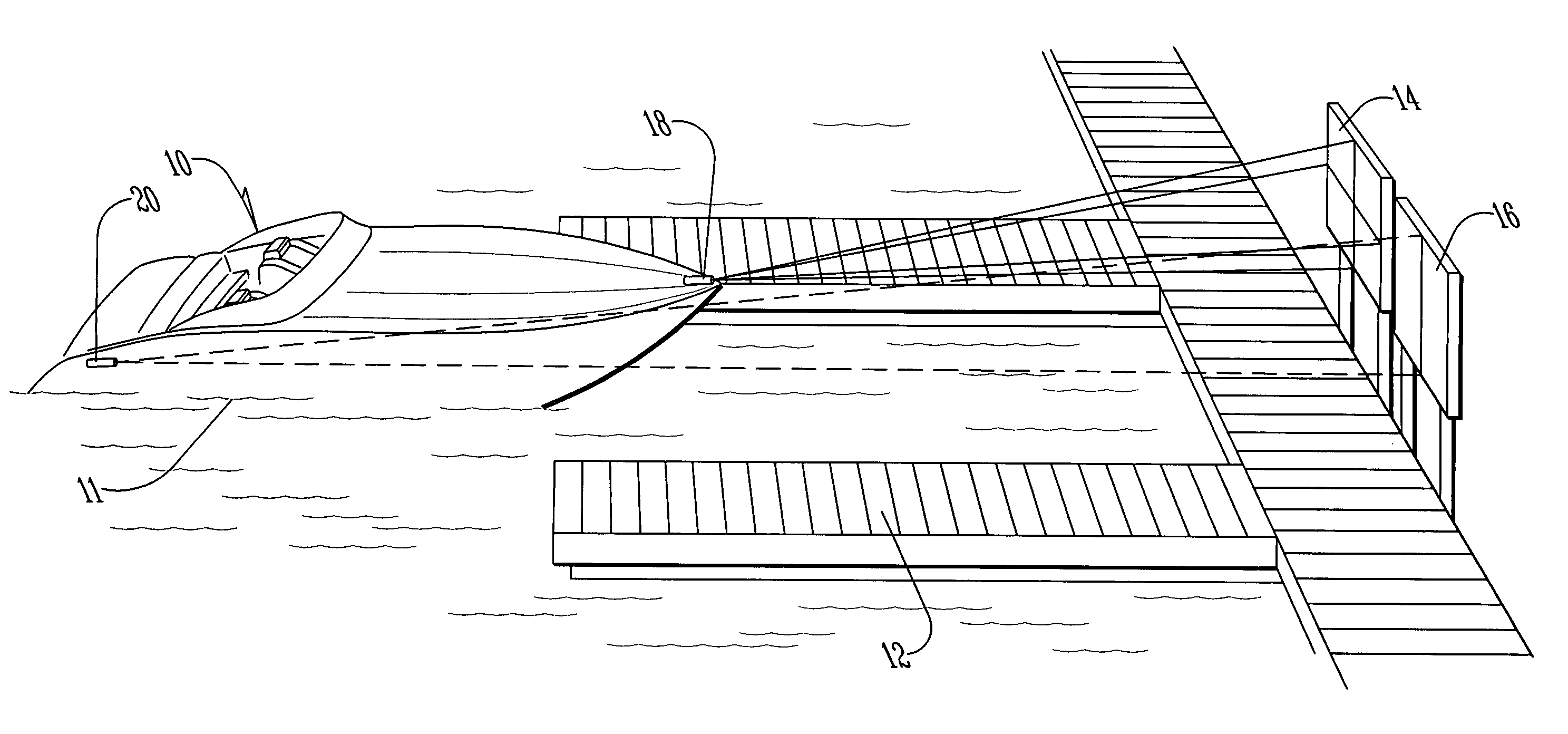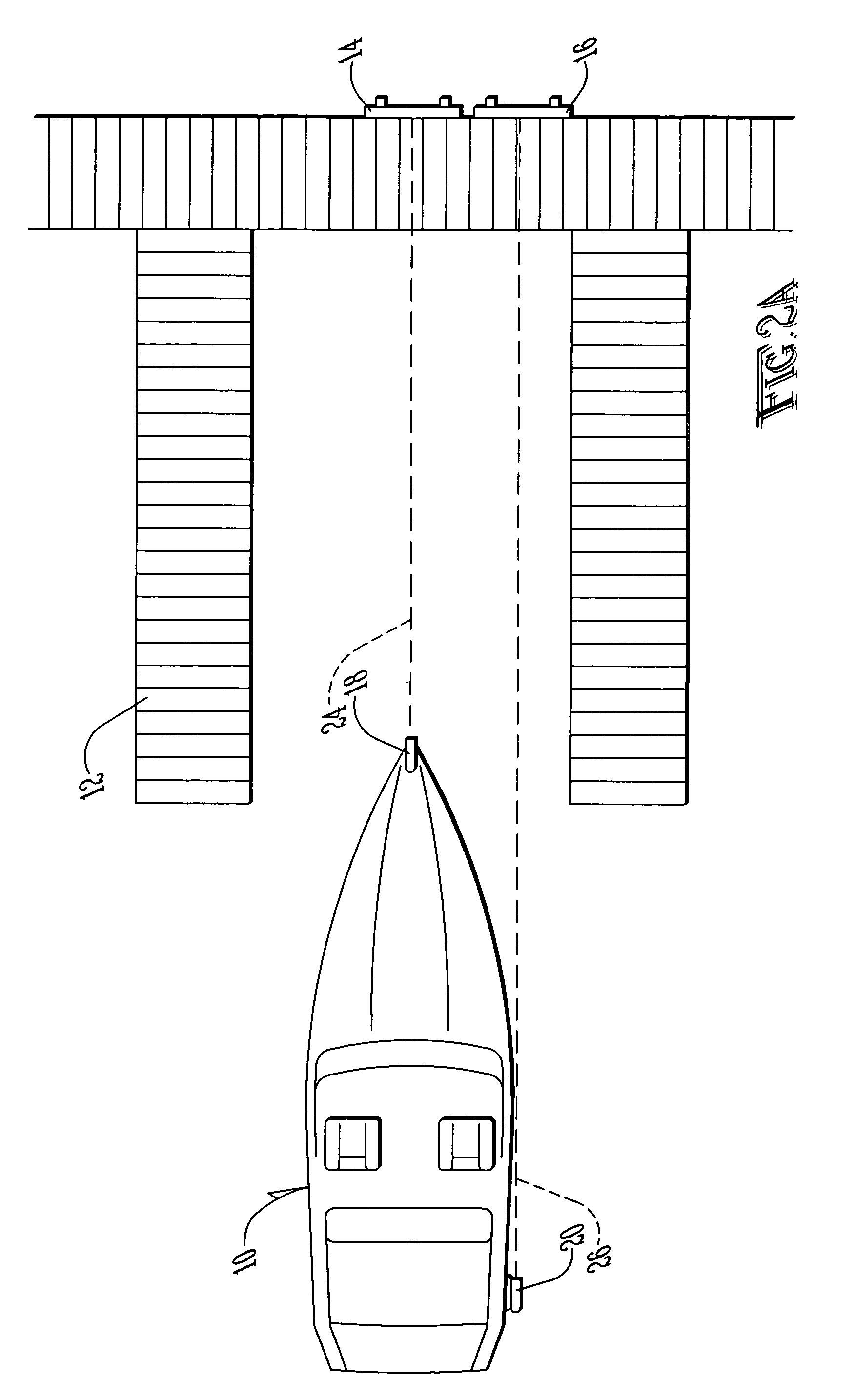Vehicle positioning apparatus
a positioning apparatus and vehicle technology, applied in the direction of vehicle position/course/altitude control, process and machine control, instruments, etc., can solve the problems of increasing the effect of many of these factors, affecting the safety of the vessel, so as to achieve the effect of simple operation
- Summary
- Abstract
- Description
- Claims
- Application Information
AI Technical Summary
Benefits of technology
Problems solved by technology
Method used
Image
Examples
Embodiment Construction
[0032]With reference to FIG. 1, the preferred embodiment of the present invention may now be described. Watercraft 10 afloat in body of water 11 is to be brought into slip 12. (Certain details of slip 12 have been omitted for clarity.) In the preferred embodiment, watercraft 10 is a yacht, cruiser, houseboat, or similar watercraft that is typically moored at docks or slips designed for boats employed for personal rather than commercial use. It should be noted, however, that the invention is not so limited, and the present invention may in fact be used in connection with any sort of vehicle that must be navigated into, out of, or through a small or enclosed space. In addition, while slip 12 is shown as used in connection with the preferred embodiment, alternative embodiments may replace slip 12 with a dock, boat trailer, or any other limited space into which a vehicle may be maneuvered for various purposes.
[0033]Mounted on watercraft 10 are first emitter 18 and second emitter 20. In ...
PUM
 Login to View More
Login to View More Abstract
Description
Claims
Application Information
 Login to View More
Login to View More - R&D
- Intellectual Property
- Life Sciences
- Materials
- Tech Scout
- Unparalleled Data Quality
- Higher Quality Content
- 60% Fewer Hallucinations
Browse by: Latest US Patents, China's latest patents, Technical Efficacy Thesaurus, Application Domain, Technology Topic, Popular Technical Reports.
© 2025 PatSnap. All rights reserved.Legal|Privacy policy|Modern Slavery Act Transparency Statement|Sitemap|About US| Contact US: help@patsnap.com



